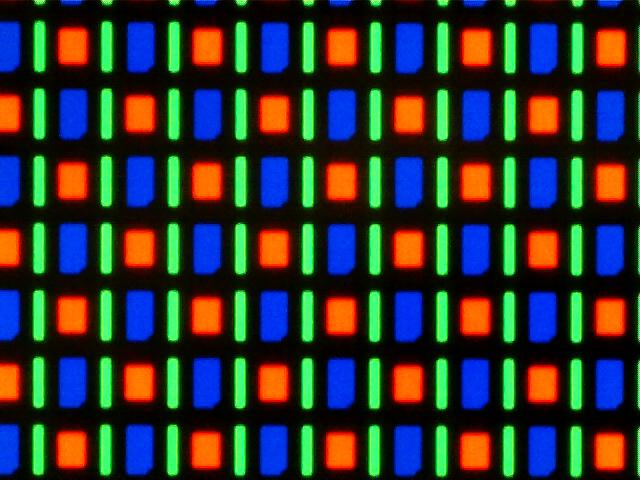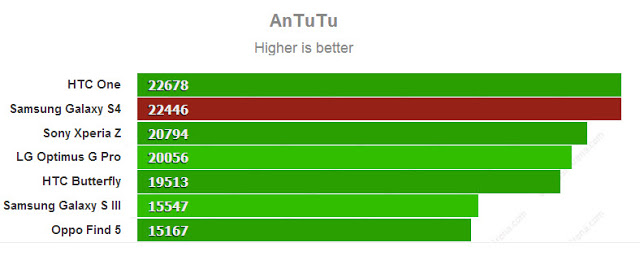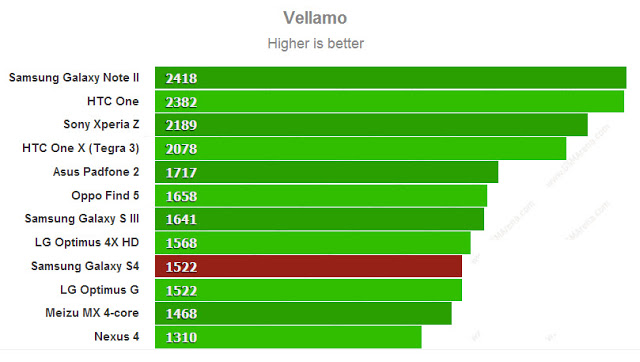
Yes, it came. One of the most anticipated smartphones of the year, in a packed event in Radio City music hall, Times Square, New York—Samsung Galaxy S IV, touting a huge screen, big camera, two quad-core processors, 2 GB RAM, and a number of software features.

I suppose you could glean the excitement of the top Samsung executives from that image. If you haven’t watched the Unpacked event, then be my guest:
Now, we will check it out in detail and see how great this smartphone really is.
The Technical Specifications
Briefly, the known technical specifications are listed here for you to review, with notes about what we are going to discuss further.
| Feature | Galaxy S IV | Notes | |
|---|---|---|---|
| Display technology | Super AMOLED Full HD | Worth buying for | |
| Resolution | 1920×1080 px (441ppi) | that is Full HD | |
| Screen size | 4.99 inch | ||
| Processor | Exynos 5 Octa (two processors, 1.6 GHz ARM Cortex-A15 and quad-core ARM Cortex-A7); US version has Qualcomm Snapdragon 600 quad-core 1.9 GHz | Definitely amazing processors, but Exynos 5 will not perform as great as Snapdragon. We will see a few benchmarks below. | |
| RAM | 2 GB | ||
| OS | Android 4.2.2 Jelly Bean | ||
| Storage | 16/32/64 GB with Micro SD up to 64 GB | No difference from other major phones | |
| GPU | Depends on the SoC. Exynos—PowerVR SGX544; Snapdragon—Adreno 330 | ||
| Connectivity | Cat 3 LTE 100/50 Mbps Wi-Fi a/b/g/n/ac BT 4.0 IR-LED NFC |
HTC One, Xperia Z also have Cat 3 LTE with same download/upload speeds. | |
| Camera | 13 MP, 2 MP | ||
| Battery | 2600 mAh | ||
| Dimensions | Height | 136.6 mm (5.38 in) | |
| Width | 69.8 mm (2.75 in) | ||
| Depth | 7.9 mm (0.31 in) | ||
| Weight | 130 g (4.59 oz) | ||
This particular update to the Galaxy S family is a wonderful, hot update indeed. We have some important aspects to share in this article. Let’s go to them feature by feature.
The Display
There are major aspects of display that we need to talk about. Current Galaxy S IV smartphone uses Samsung’s own technology known as Super AMOLED, and it uses the Full HD resolution on this device. Leave resolution out, and just think about the display technology. There are few advantages and disadvantages that AMOLED has, which are detailed in this article, comparing AMOLED to the other major display technology, known as LCD IPS.
Now, there are two versions of Super AMOLED—the regular and Super AMOLED Plus. Galaxy S II smartphone released back in 2011 used Super AMOLED Plus, which is a much better technology than Super AMOLED, although Samsung has in time made improvements and adjustments.
The difference is in the use of the matrix array. Let’s check it out. In Galaxy S II, the sub-pixel array of the AMOLED screen uses all three sub-pixels on every pixel—Red, Green, Blue. It is hence known as RGB matrix, and the display panel is known as Super AMOLED Plus. Its layout is represented below.
On the other hand, Super AMOLED uses something known as PenTile matrix. It doesn’t have RGB array, but RGBG array. That is, there are two types of sub-pixels—the one that uses RG and the one that uses BG. They are interlaced.

The end result is that the RGBG pixel array takes up less power, but at the cost of slight pixelation.
Within S IV, the resolution is so high that you probably won’t see any pixelation, just as in the case of Retina Display. However, RGB sub-pixel array is better to look at than PenTile array, as the latter may tend to have a little green tinge to it.
High resolution and 16:9 aspect ratio of S IV means that you won’t have those black bars on the top as you find on iPhone 4, 4S, etc., while watching HD content. Since the 720p and 1080p HD videos are rendered in 16:9 aspect ratio, such movies and images will fill the screen in the most visually pleasing way.
An improvement of the display is a feature known as Adapt Display, which Samsung says improves the display by adjusting various things like brightness, contrast, etc. It probably is an improvement to the auto-brightness feature available in most smartphones. In this case, the display probably adapts brightness and contrast to give you better viewing depending on what you are viewing—a web page, an ebook, or a video. This is a very clever move by Samsung indeed, and could probably make better use of that 2600 mAh battery.
Chinese blog IT168 did publish a number of images here that compare Galaxy S IV to S III and Xperia Z.


Remember the Xperia Z phone has Sony mobile BRAVIA engine and that is bound to give better resolution pictures. With Adapt Display feature, Samsung is probably trying to compete with Xperia Z.
The Performance
Talking about Galaxy S IV’s performance, I would like to point you to the truth behind the Exynos 5 Octa processor. The last time that we got to see an Exynos 5 processor was with Google Nexus 10 tablet that really performed well. The reason why Exynos 5 is important is that it is based on ARM Cortex-A15 architecture, and that is the in-thing at this time.
The importance of this processor—Exynos 5 Octa (aka Exynos 5410) is that it has two processors in it: one low-power, low-performance quad-core processor working on ARM Cortex-A7 architecture and a secondary high-power, high-performance quad-core processor based on Cortex-A15 architecture.
ARM has introduced a new way of saving power, known as big.LITTLE, in which the partners of ARM, who develop CPUs based on its architecture, can use Cortex-A7 and Cortex-A15 cores side by side to save power.
The essence of these inner workings is that your S IV’s processor is not eight-core, but it is two four-core processors (which is not much different from S III, which has an Exynos Cortex-A9 quad-core processor). When you are working on processor-intensive tasks like gaming or productive works, the processor will switch to A-15 core and will give you maximum performance. When you are working on easy tasks like reading a document, the system will switch to low-power Cortex-A7 processor. In short, you will only see performance of a quad-core processor (albeit great performance), and not an eight-core processor as touted by some publications.
There is however something that we have to clarify for you. There are two editions of Galaxy S IV. One that ships in the US and one that ships elsewhere. Within the US, Samsung will release Qualcomm Snapdragon 600 quad-core processor clocked at 1.9 GHz with the device. Elsewhere, you will get Exynos 5 Octa processor. We have recently gone through some benchmarking results published by Chinese blog, IT168.com. Here are the results that they identified, translated by GSMArena:


There is importance to these results. First of all, the international version uses quad-core Exynos 5 Octa, while others in the competition may use a Snapdragon processor, like HTC One that scored higher points using its Qualcomm Snapdragon 600 quad-core 1.7 GHz processor, which is much better performing than Exynos’s ARM Cortex-A15 core. Sony Xperia Z also uses Snapdragon, but it is S4 Pro, slightly older Snapdragon. But it also gives comparable performance.
In essence, we have to say Exynos 5 Octa is just a regular processor, and falls slightly short of performance as compared to Snapdragon’s 600, which is slightly more advanced than even Cortex-A15, as Qualcomm develops its own microarchitecture known as Krait, which has always been slightly more advanced than ARM’s parallel Cortex microarchitecture.
In the US, however, Galaxy S IV uses Snapdragon 600 quad-core clocked at an amazing 1.9 GHz, which will definitely make it the fastest smartphone available.
The Camera
If you watched the Unpacked event, given above, Ryan Bidan, director of product marketing, Samsung, has told us about the camera improvements on S IV. The phone uses 13 MP camera (if you read our article on camera technologies, you may realize there is no point to big megapixel counts).
Impressive things about this camera are some software improvements which allow you to take pictures with both the front-facing and main cameras at the same time, a feature known as dual-camera. With this feature, what you can do is take a picture and within the picture, in an inset, you can have your own picture embedded with the help of the front-facing camera.

Quite an amazing feature, indeed, but we don’t know if there is any requirement for that. It doesn’t get you into the context, just in an inset. And you can pick the shape of the inset. This is just a minor convenience feature that most people may not be excited about.
Another camera feature is ‘sound and shot’, which lets you insert a piece of sound to the captured image. Another major feature is the ability to remove unnecessary objects from the final shot.
In order to know the actual camera performance, we have to wait till the device hits the market to test it against other popular smartphone cameras.
Translation
One major feature of S IV is that it can work as your personal translator. S Translator app on the phone understands nine languages, and can translate what you speak into whichever language you want it to. This is a nifty feature for international travelers. However, we always come across the problems of software translators, most of which are not perfect. This is still one feature that really is very attractive.
The phone supports text to speech and speech to text, with which you can type in or speak and have the phone speak it in different languages.
Besides these new features, the phone has several major software improvements.
Software & Apps
The phone comes with the latest Android, 4.2.2 Jelly Bean, which we know has been rolled out to Google Nexus series. On the top of that, Samsung has its own TouchWiz UI, which we have had the chance to experience in other Galaxy handsets. There are other major software improvements that Samsung has announced with this phone.
A few we are familiar with already are Air View and S Voice. A few new software features have been introduced to Galaxy S IV. One of them is Story Album that helps you create an album out of the pictures that you take. You can create themed albums with images and text, and Samsung has partnered with Blurb to make the story album available in print.
S Voice gets an improvement known as S Voice Drive, with which you can use S Voice to attend calls or read messages to you while you are driving. Another program called Smart Switch helps move data from other devices—Android, iOS, etc., to new Galaxy S IV.
Remember how BlackBerry 10 has your professional communications and personal communications separated? Samsung has introduced a similar feature into S IV, known as Samsung Knox, which separates personal space from workspace.
We have looked at only a few software features here, and there are quite a few (group play, video call enhancements, etc.) that we will get to experience when the device comes to the market.
Other Major Aspects
Connectivity with 4G LTE is possible on Galaxy S IV. It gives speeds of 100 Mbps download and 50 Mbps upload, at LTE category 3. This is a hexa-band device, which means the device should be able to support a diversity of LTE band sets for different regions.
Other major connectivity options include Wi-Fi 802.11 a/b/g/n/ac. 802.11ac is still under development, and it will provide better bandwidth on your Wi-Fi networks. MediaTek’s MT7650 has HT80 Wi-Fi technology that supports up to 433 Mbps in Wi-Fi dual-band (2.4 GHz and 5 GHz) in 802.11ac. This is probably what Samsung Galaxy S IV has on board.
The phone has Infrared (IR-LED) function, which makes it a TV-remote. Besides these, there are quite a number of sensors that allow such features as air gestures, Smart Stay, Smart Pause (pausing the video being played if you are looking away), etc. Also, the device touts 50 GB of Dropbox storage availability, as opposed to 20 GB given by HTC One.
The Build Quality
Samsung has finally gone with a polycarbonate back for Galaxy S IV, and this is a very welcome change. We have only got the chance to look at the device, and not touch and feel it, and it definitely looks strong and sturdy. Available in two colors, Black Mist and White Frost, the phone from the front reminds me personally of a larger Nexus 4 (did any of you feel so?)
The phone is quite thin and light, as compared to the previous Galaxy. At only 7.9 inches, the phone is very thin and light, probably thinner than almost all competing phones out there, save iPhone 5. HTC One is thicker at over 9 mm, while Sony Xperia Z is as thin as S IV at 7.9 mm.
The Buying Decision
The major competition to Samsung Galaxy S IV comes from two other smartphones that we reviewed earlier—HTC One and Sony Xperia Z. While all three phones have full HD resolution, HTC One has the smallest screen of 4.7 inches. Both Xperia Z and HTC One have similar connectivity options like LTE Cat 3 and other Wi-Fi options.
Samsung Galaxy S IV has two editions, the International edition which comes with Samsung’s own Exynos 5 Octa processor, while the US edition uses Snapdragon 600 processor.
When it comes to choosing the right smartphone, there are quite a few aspects to consider. Let me elaborate on the aspects that are in favor of Galaxy S IV here.
If you need a really large, gorgeous display, if you need a lot of control over the device through those gestures and extra sensors, if you need that carrier flexibility, then please go ahead and opt for Galaxy S IV.
If you are in the US, Galaxy S IV probably is the fastest smartphone available. On the other hand, if you are in the international market, I would suggest HTC One as it has better processing power, albeit not extremely noticeable. Also HTC One fits in your pocket better and has slightly better build quality.
In Conclusion
The price is another important factor that decides whether you need to buy a smartphone or not. With these features that Samsung developed, the price is not going to be small, but it should still be better than iPhone 5, I suppose. As Apple’s product has long lost its glamor, I would suggest you go for some great Android devices. Samsung Galaxy S IV is definitely worth it to buy, and it is coming to a huge market of 155 countries and 327 mobile carriers.
As you probably remember in our review of best smartphones, we have taken Galaxy S III as the champion in mobile carrier market. Galaxy S IV could probably replace S III in that list. Our recommendation to you is if you are a fan of large screens and Galaxy S series in particular, then don’t hesitate and get your hands on this wonderful smartphone when it comes to the market by the end of April.
[Update: ]
News has come that Samsung is at work on a technology that enables the Exynos Octa processor’s all eight cores to be used at once. The improvement is expected by the fourth quarter of 2013. We have mentioned earlier in the review that these eight cores do not actually work together. The four cores in Cortex-A15 technology work when the performance has to be high, and the other four A7 cores work when the performance doesn’t have to be high and the power has to be saved.
New solution for heterogeneous multiprocessing developed by Samsung will enable all eight cores to work simultaneously, while saving power and improving performance. At that time, S4 could indeed be one of the fastest smartphones we have available.